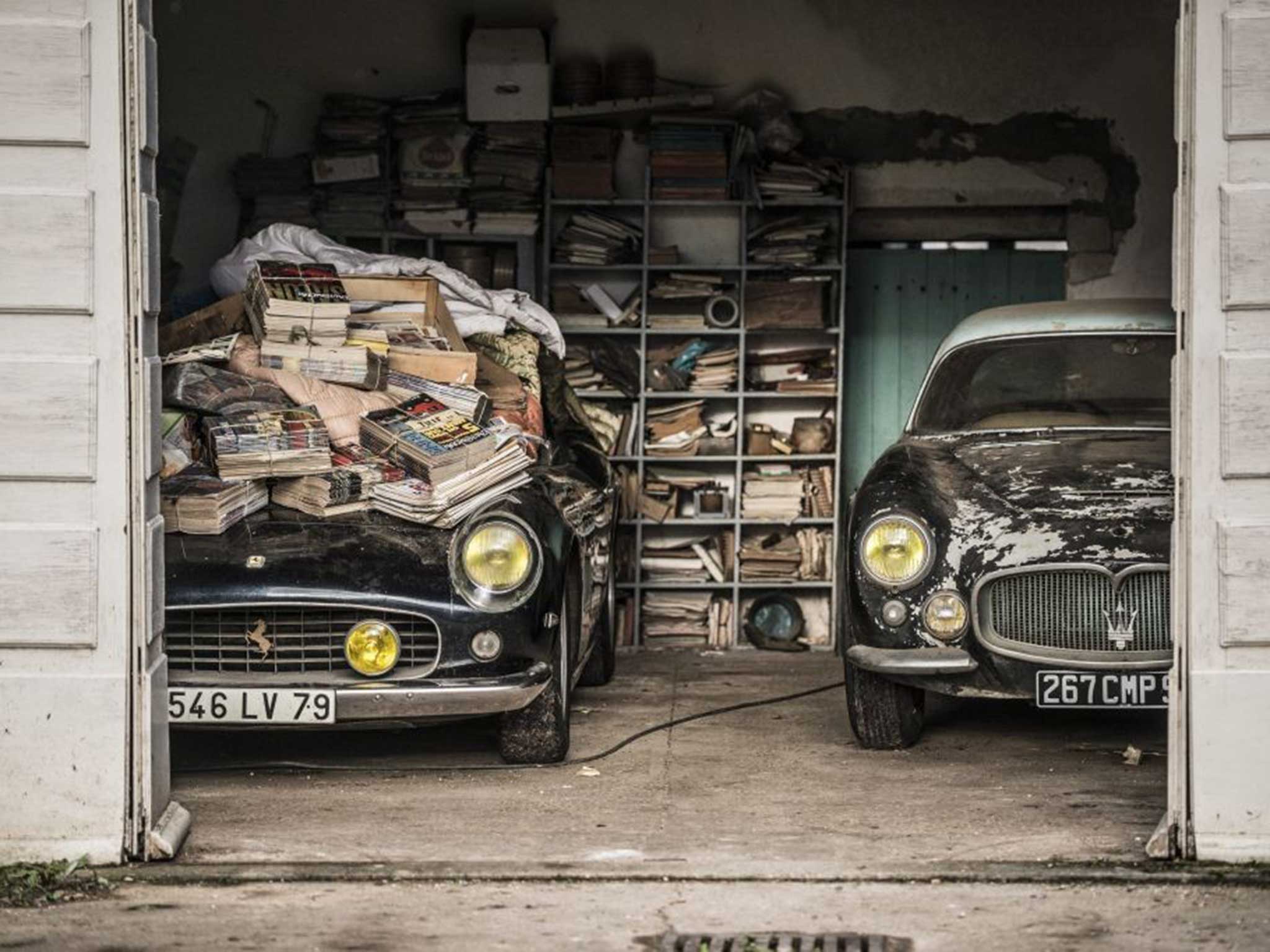Hoard of 60 classic cars - including Alain Delon's Ferrari Spyder - discovered on French farm
The screen legend's rare sports car is expected to fetch more than £9m when it is auctioned in Paris in the New Year

Your support helps us to tell the story
From reproductive rights to climate change to Big Tech, The Independent is on the ground when the story is developing. Whether it's investigating the financials of Elon Musk's pro-Trump PAC or producing our latest documentary, 'The A Word', which shines a light on the American women fighting for reproductive rights, we know how important it is to parse out the facts from the messaging.
At such a critical moment in US history, we need reporters on the ground. Your donation allows us to keep sending journalists to speak to both sides of the story.
The Independent is trusted by Americans across the entire political spectrum. And unlike many other quality news outlets, we choose not to lock Americans out of our reporting and analysis with paywalls. We believe quality journalism should be available to everyone, paid for by those who can afford it.
Your support makes all the difference.The makes of the cars read like a Debrett’s of the automobile world: Bugatti, Hispano-Suiza, Talbot-Lago, Panhard-Levassor, Maserati, Ferrari, Delahaye, Delage. They are a hoard of 60 classic cars discovered on a farm in the west of France.
They include a Ferrari 250 GT SWB California Spyder – one of only 37 to be built which belonged originally to the French screen legend, Alain Delon. The Spyder alone is expected to sell for around €12m (£9.4m) when the trove is auctioned in Paris in the New Year.
Detective work by two auctioneers located the cars last month after they had been “lost” for more than 30 years in a series of ramshackle farm shelters in western France. Matthieu Lamoure, the managing director of Artcurial Motorcars, said that the discovery was the mother of all “barn finds” . “We found ourselves overcome with emotion,” he added. “Probably much like Lord Carnarvon and Howard Carter on being the first people for centuries to enter Tutankhamun’s tomb. It really was a case of waking up Sleeping Beauty.”
At least three of the cars are known to have belonged to celebrities. The Ferrari California Spyder, built in 1961, was owned by Delon. In 1964 he was photographed several times at the wheel of the car with Jane Fonda and Shirley MacLaine by his side.
A Talbot Lago T26s “Grand Sport Aérodynamique” – one of several Talbot Lago T26s in the collection – once belonged to King Farouk of Egypt (1920-1965). In early February the cars will be sold at the Retromobile Salon in Paris in the condition in which they were found.
They were collected, mostly between 1955 and 1965, by a French transport tycoon, Roger Baillon, who set out to create his own automobile museum. When his business ran into trouble in 1977, Mr Baillon sold 50 of his cars. It was assumed at the time that the whole fleet had been disposed of.
Earlier this year, Matthieu Lamoure and Pierre Novikoff, of the specialist auction business Artcurial Motorcars, heard rumours that a handful of cars were left out of the sale. Detective work brought them to a farm in western France. Mr Novikoff said: “On the phone, I gathered that this could turn out to be something important. Without realising the scale… we arranged to go there.”
The two men came across a series of makeshift shelters in which the vague outlines of cars could be seen, covered by tarpaulins, corrugated iron sheets or old motoring magazines. “We came closer and realised that there were dozens of cars parked underneath,” Mr Novikoff said. “Some of these had been put there 50 years earlier and left untouched. Wooden posts, between the cars, supported the fragile roofs. The sides were open to the elements. We still didn’t realise exactly what we were faced with: the number of cars, the marques, their condition.” Eventually, the two men realised that they had stumbled on something which was “half way between a metallic graveyard and a museum”.
“Ivy had invaded a car and entirely covered its wheels,” said Mr Novikoff. “Weeds had taken root in a passenger compartment.” Little by little, by speaking to relatives, the two men have uncovered the story of the Baillon collection.
Mr Lamoure said: “Roger Baillon made his fortune manufacturing trucks, at a time when the transport business was booming, after the war. He produced a revolutionary lorry in 1950 that featured the first ever cabine avancée (forward-control cab) in the transport industry.”
When he started his collection in the mid-1950s, old cars did not command the astronomical prices that they can fetch today. “Roger Baillon saved many of these cars from the scrapyard,” Mr Novikoff said. “When the vehicles arrived, he put them away without much fuss, one next to the other. He restored some and left others as they were. This is surely the last time that such a discovery will be made. What is so special here is the number of cars, the range and the quality and pedigree of the models.”
Some of the cars are expected to go to museums. Others to private collections. “They will be displayed and sold as they are. Just as we found them,” Mr Novikoff said. “Possibly one or two spider’s webs may be lost in transit, and some of the dust blown away, but that’s all.”
Join our commenting forum
Join thought-provoking conversations, follow other Independent readers and see their replies
Comments